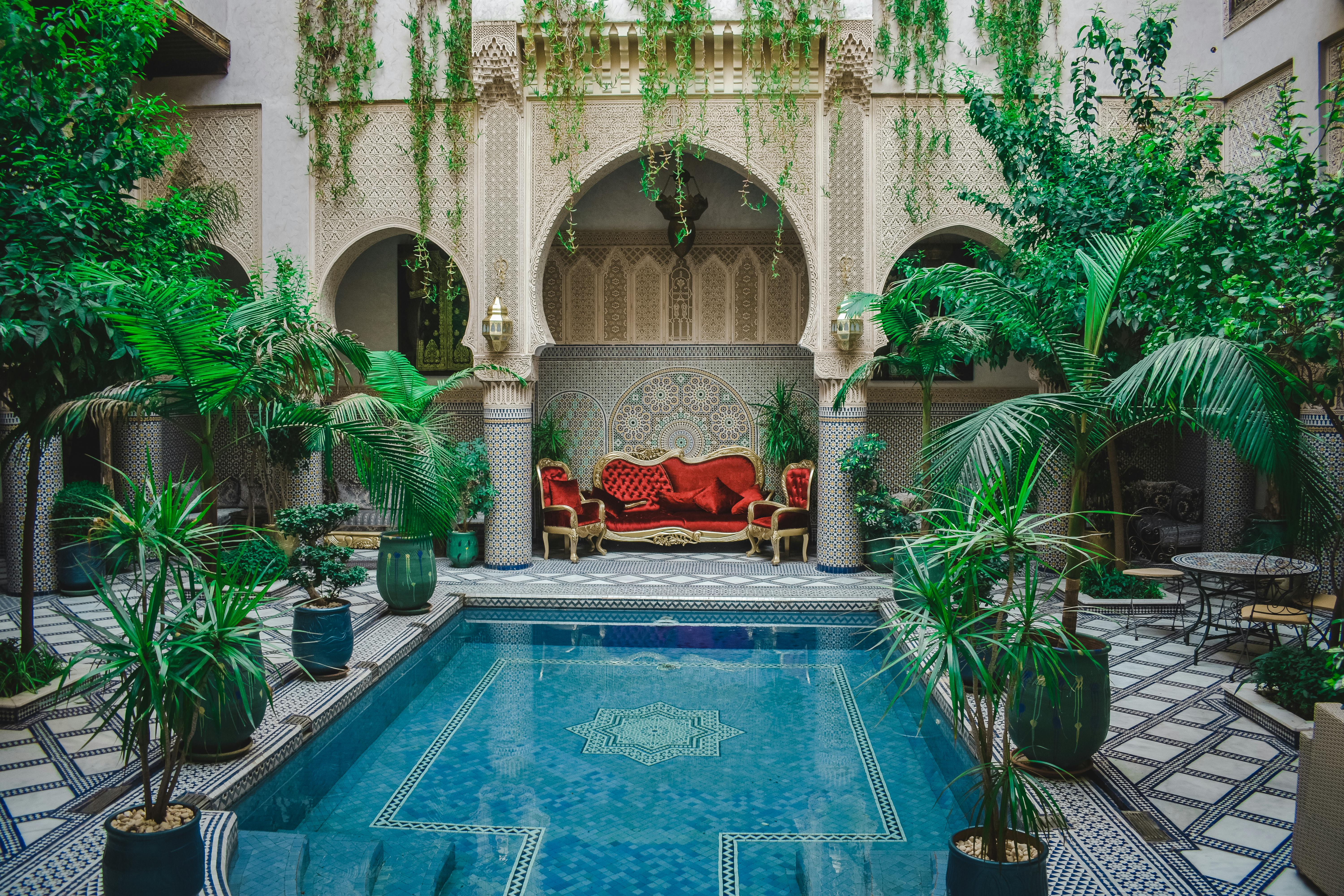The Allure of Moroccan Riads: Bringing Courtyard Magic Indoors
In the heart of bustling Marrakech, a hidden oasis awaits behind unassuming walls. As you step through the ornate doorway, a world of tranquility unfolds—a central courtyard adorned with intricate tilework, lush greenery, and the soothing sound of trickling water. This is the essence of a Moroccan riad, a traditional house built around an interior garden. Now, this centuries-old architectural marvel is inspiring a new wave of home design that brings the magic of courtyards indoors.

The Rich History of Moroccan Riads
Riads have been a cornerstone of Moroccan architecture for centuries, with roots tracing back to the Roman and Andalusian periods. The word riad comes from the Arabic term for garden, reflecting the central role of nature in these dwellings. Traditionally, riads were inward-facing homes built around a central courtyard, providing privacy and protection from the harsh desert climate.
In ancient times, riads were the domain of wealthy merchants and nobility, serving as both residential spaces and centers for social gatherings. The courtyard design allowed for natural ventilation and cooling, creating a microclimate that offered respite from the scorching heat. Over time, riads evolved to incorporate elaborate decoration, including intricate tilework, carved plaster, and painted wooden ceilings.
Adapting Riad Design for Modern Homes
Today, designers are reimagining the riad concept for contemporary living, bringing the essence of these magical spaces into homes around the world. The key elements of a riad-inspired interior include:
-
Central Courtyard: The heart of the design, often featuring a water feature or lush plantings.
-
Natural Light: Skylights or open roofs allow sunlight to flood the space.
-
Intricate Patterns: Moroccan-inspired tiles, textiles, and architectural details add visual interest.
-
Indoor-Outdoor Flow: Sliding glass doors or large windows blur the lines between interior and exterior spaces.
-
Vertical Gardens: Living walls bring nature indoors and improve air quality.
Creating a Riad-Inspired Oasis in Any Space
While not every home can accommodate a full courtyard, the principles of riad design can be adapted to spaces of all sizes. In smaller homes, a light well or atrium can create the illusion of an open courtyard, bringing natural light and a sense of openness to the interior. For those with limited floor space, vertical gardens and strategically placed mirrors can evoke the feeling of a larger, nature-filled environment.
Color plays a crucial role in riad-inspired design. Traditional Moroccan palettes feature rich jewel tones like sapphire blue, emerald green, and deep red, often balanced with neutral whites and earth tones. These colors can be incorporated through tiles, textiles, and painted accents to create a vibrant yet harmonious atmosphere.
The Sensory Experience of Riad Living
One of the most compelling aspects of riad design is its ability to engage all the senses. The sound of water from a central fountain creates a soothing ambiance, while fragrant plants like jasmine and citrus trees perfume the air. Tactile elements such as plush cushions, intricate woodwork, and cool tile underfoot add layers of sensory richness to the space.
Lighting is another crucial element in creating the magical atmosphere of a riad. During the day, natural light filters through skylights and carved screens, casting intricate shadows and creating a play of light and dark. At night, lanterns and candles transform the space into a romantic retreat, perfect for entertaining or quiet relaxation.
Blending Tradition with Modern Technology
While riad design is rooted in centuries-old traditions, innovative designers are finding ways to incorporate modern technology without compromising the aesthetic. Smart home systems can control lighting, temperature, and even water features, allowing homeowners to create the perfect ambiance with the touch of a button. Solar panels can be discreetly integrated into rooftop designs, powering eco-friendly cooling systems that maintain the refreshing microclimate traditionally found in riads.
The Psychological Benefits of Courtyard Living
Beyond their aesthetic appeal, riad-inspired spaces offer significant psychological benefits. The connection to nature provided by indoor courtyards has been shown to reduce stress, improve mood, and enhance overall well-being. The sense of enclosure and privacy creates a sanctuary-like atmosphere, offering a much-needed escape from the outside world.
Moreover, the versatility of courtyard spaces encourages a more mindful approach to living. These areas can serve as meditation spots, yoga studios, or simply quiet retreats for reading and reflection. The presence of greenery and natural elements promotes a sense of calm and groundedness, helping to counteract the frenetic pace of modern life.
A Global Trend with Local Flavor
As the riad-inspired trend gains momentum, designers around the world are putting their own spin on the concept. In Scandinavian countries, courtyard designs incorporate light woods and minimalist aesthetics to create bright, airy spaces that combat long, dark winters. In tropical regions, lush plantings and water features take center stage, creating cool oases that offer relief from humid climates.
This global adaptation of riad principles demonstrates the versatility and enduring appeal of courtyard living. By blending traditional wisdom with contemporary design, homeowners can create spaces that are both timeless and relevant to modern lifestyles.
The allure of Moroccan riads lies in their ability to create a private paradise within the confines of home. As we seek to carve out spaces of tranquility and connection in our increasingly hectic world, the riad-inspired courtyard offers a compelling solution. By bringing the outdoors in and creating a central focal point for daily life, these designs remind us of the importance of pause, reflection, and connection to nature. Whether reimagined in a city apartment or a suburban home, the magic of the riad continues to captivate and inspire, offering a timeless approach to harmonious living.





